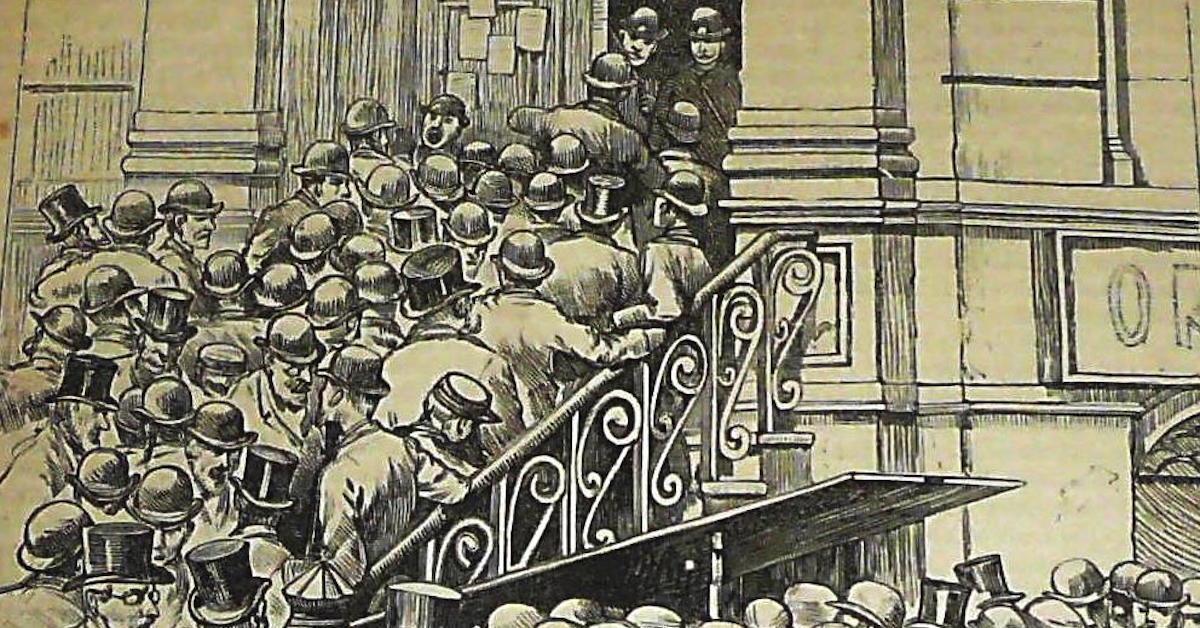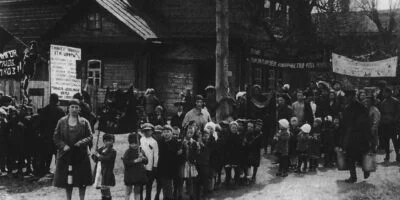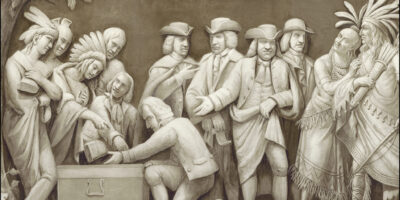The Life and Times of Bagehot, the Greatest Victorian
It is a rare occasion that a 19th-century English banker captures the attention of today’s intellectuals. Since before its publication barely three weeks ago, James Grant’s biography Bagehot: The Life and Times of the Greatest Victorian has been energetically discussed in many quarters.
Every major news outlet has reviewed it: naturally, Adrian Wooldridge at the Economist, the magazine Bagehot edited for the better part of his adult life and where his most brilliant writing was done, reviewed it very favorably; the Financial Times, the Wall Street Journal, the London Times, the New York Times, the Washington Post, and even Foreign Affairs have added their own comments. Grant himself wrote a neat overview in the Museum of American Finance’s quarterly journal Financial History. Suffice it to say, Grant and his publisher have managed to make quite a splash.
What could possibly be left to talk about? As with all “great subjects,” John Stuart Mill said, “much remains to be said” — a quote so important to Bagehot that it opened his first book, The English Constitution (p. 187). Walter Bagehot grew up in the town of Langport, in Somerset in western England. Two of the town’s major commercial families, the Stuckeys and the Bagehots, had merged their interests through marriage, and the family bank — Stuckey’s — would come to form a large part of Walter’s adult life, and, indeed, income. Wooldridge describes the family as “provincial bourgeoisie,” in his Economist review, and while not an aristocrat or particularly wealthy, nor did he grow up poor.
A voracious reader, Bagehot was reading Dickens at 6 and writing poetry at 7. A few years later he attended classes at a local grammar school; at age 12 he wrote essays on Julius Caesar and at 13 he had finished the Aeneid in Latin; at 15, he mastered Newton, Homer, and Cicero. It was clear to all that the Bagehots were raising an extraordinary child. As Bagehot was a Unitarian, Oxford and Cambridge were closed to him, and so his path took him to London. Not that he objected: later in his career he would denounce Oxford as “not an exciting place and its education operates as a narcotic rather than a stimulant” (p. 117).
As a precocious 16-year-old, as old as University College London itself, Bagehot excelled once again. “In Walter Bagehot,” Grant writes in his familiar and elegant prose, “there was no gentlemanly fear of conveying scholarly effort” (p. 22); indeed, Bagehot “could learn almost anything he set his mind to” (p. 36). The three career paths open to him as a young barrister-in-training were the law, his family’s banking business, and professional writing. Nothing but humble, Walter renounced the law and built a grand career combining the other two. He became “The Literary Banker,” simply signing most of his articles “A Banker.”
His family’s bank, Stuckey and Co, was a prudently run and exceedingly profitable country bank that weathered the many 19th-century financial panics without any problems. Working for the bank for much of his life, even while most of his efforts were concentrated on the Economist, Bagehot finally became vice chairman of the bank a few years before his death. Grant repeatedly points out the irony that, through various acquisitions over the next century, what used to be Bagehot’s bank ended up in the Royal Bank of Scotland group — the largest bank in the world in 2008 and the recipient of Britain’s biggest bailout.
The claim to which the title refers — the eminent historian of Victorian England George Malcolm Young gave Bagehot this honorific description in 1948 — is somewhat slanted; despite Grant’s oddly placed half-dozen-page tangents to other great Victorians (Mill, Disraeli, or Gladstone, for example), this is a biography of Bagehot, not a survey of Victorian intellectuals. It’s a “warts-and-all” portrait of a man and his life, not the intellectual origins of central banking or lender-of-last-resort obligations.
What most economists know about Walter Bagehot is contained in a brief 20-page chapter slyly placed at the end of the book (chap. 16). Finally, the reader bursts out — this is what we came for! Predictably, this is also the most valuable chapter, where Grant’s brilliancy as a condenser of complicated ideas shines through. It’s one of the best introductions to the ideas of the Currency School and the Banking School, astoundingly summarized in the many Norman-Bagehot-Hankey debates over monetary theory.
The monetary debates of the day resemble our own financial disputes remarkably well: how does monetary policy impact the real economy (“money neutrality” and “the transmission mechanism,” in modern jargon), rules vs. discretion for central banks, and of course Bagehot’s most lasting legacy: the proper way of dealing with financial crises. Emerging central banks ought to lend freely, at a high rate of interest, against good security, as laid down in Bagehot’s “rules” (or “principles,” “maxim,” “dictum” — the variations of Bagehot’s authority are maddeningly endless).
By far the best chapter, it takes up much too small a section of the book. Considering that Bagehot’s parting heritage to the world is his instructions for prudential central banking, I’d like to have seen much more. Grant’s frequent swings from one topic to the next are rather unwelcome; it is almost as if he has not made up his mind about his key audience: Central bankers? Cultural historians? Historians of ideas? Those with a love for Victorian Britain?
He does uncover a lot of lesser-known facts about his subject’s life. Bagehot apparently liked to do his writing standing up. He believed that intellectual life crowded out sexual urges (“One may only wonder,” Grant writes, “what this … might imply about the state of things chez Bagehot”) — and his social views were not exactly in line with his great inspiration, John Stuart Mill. Developing countries were “semi-civilized” (p. 246); he abhorred the Union’s tariffs during the Civil War and praised the South’s cotton-backed option bonds.
His views on African Americans were, to say the least, far from enlightened (pp. 44, 130-31), and his writing on women’s inferiority abounds in misogyny (p. 228). Bagehot would certainly not qualify as very libertarian — even though his contemporary raging in favor of free trade, unregulated banking, and minimum government might suggest so.
he proper role of government, Bagehot thought, was to run the railroads, educate the poor, and ensure public health (pp. 185-86). His quips against this or that objection to a government policy could fit into a New York Times column: “The English State is but another name for the English people” (p. 231).
His personal incomes in 1857 — the year of his engagement with Eliza Wilson, the daughter of the founder of the Economist, James Wilson — consisted of £500 from his salary, managing the Bristol branch at Stuckey’s (p. 82), £210 from the annual dividend on his Stuckey’s shares, and £50 a year from his interest in the National Review magazine (p. 85). A comfortable living, Grant concludes, but Eliza recorded in her journal spending around £1,400 a year; the puzzle remains as to “how Mr. and Mrs. Bagehot squared this particular circle.”
Bagehot defined £10,000 a year as being rich (p. 222), perhaps living up to his sister-in-law’s perception of him as “the young gentleman out of Miss Austen’s novels.” Having advanced his career a bit, Grant reports, Bagehot’s income in 1867 was almost £3,000: £780 from the Economist, £400 from his salary at Stuckey’s, and another £1,560 from the prosperous bank’s dividend (p. 169). He was doing well, financially, but what we’ll remember him for is his lively writing and brilliant paradoxes; he once wrote a 213-word sentence advocating clear sentences and the “model of our modern writing” (pp. 61-62)
Grant’s brilliant work is not a history of the lender-of-last-resort function, nor is it a story primarily of Victorian England. You naturally get some of both, but it is mainly an account of the life of Walter Bagehot — a man who, despite not making any original contributions to economic theory, is revered by economists around the world. When the next banking crisis comes around, you can be sure that central bankers will invoke the florid words of the Greatest Victorian.











